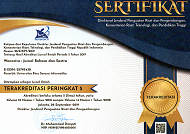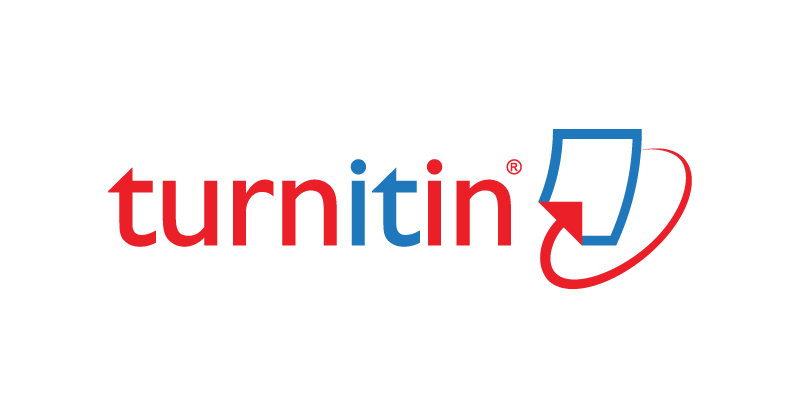The Use of Thumbs-Up Emoji in Lecturer-Students' WhatsApp Communication: Qualitative Study
Abstract
This study explores Non-Verbal Online Communication in WhatsApp using the Thumbs-Up emoji, due to controversy and politeness concerns. The researcher aims to explain the implications of using Thumbs-Up emoji for EFL Lecturers and Students. This study used the Qualitative method and selected the EFL Lecturers and EFL Students of the English Study Program IAIN Fattahul Muluk Papua as participants and it took 9 participants. Data collection was by interview and online observation to answer the research questions. The data was analyzed using discourse analysis which consists of four stages; data recording, data transcription, data selection, and data interpretation. In the context of the use of the Thumbs-Up emoji in lecturer-students’ WhatsApp communication, EFL Lecturers in Papua were more dominant in using the Thumbs-Up emoji as Appreciation to EFL Students. Based on the data, the implication caused by using the Thumbs-Up emoji found two categories including feeling implication (anxious feeling and feeling rude) and situational implication (causing misunderstanding and changing the formality of conversation). Therefore, there needs a study that deepens knowledge on the use of another emojis that also often used in WhatsApp communication for Academic content.
Full Text:
PDFReferences
Aburumman, N., Gillies, M., Ward, J. A., & Hamilton, A. F. D. C. (2022). Nonverbal communication in virtual reality: Nodding as a social signal in virtual interactions. International Journal of Human-Computer Studies, 164(February), 102819. https://doi.org/10.1016/j.ijhcs.2022.102819
Adzqia, D., & Adialita, T. (2024). PENGARUH SALES PROMOTION TERHADAP IMPULSE BUYING MELALUI POSITIVE EMOTION PENGGUNA E-COMMERCE SHOPEE. Equilibrium : Jurnal Ilmiah Ekonomi, Manajemen Dan Akuntansi, 13(1), 76. https://doi.org/10.35906/equili.v13i1.1880
Aulia, T., Sahib, R., Wijayanti, E., & Rahmawati, S. ita. (2024). Exploring on the Use of Kaonak Greeting as Non-Verbal Communication By the Native Papuan in Jayapura City. Studies in Education, Literature, and Linguistics, 08, 13. https://ejournal-fkip.unisi.ac.id/index.php/eji/
Daft, R., & Lengel, R. (1984). Media Richness Theory. In Media Richness Theory SCRIPT. DEPARTMENT OF NATIONAL SECURITY AFFAIRS NAVAL POSTGRADUATE SCHOOL.
Danesi, M. (2017). The semiotics of emoji: The rise of visual language in the age of the internet (Bloomsbury (ed.)). Bloomsbury Publishing.
Faris, I. N. I., Budiarti, D., & Permadi, A. (2021). Emojis in Indonesian Intergenerational Family WhatsApp Group. Proceedings of the Thirteenth Conference on Applied Linguistics (CONAPLIN 2020), 546(Conaplin 2020), 217–224. https://doi.org/10.2991/assehr.k.210427.033
Firdiani, A. U., Kahar, R., Syahfitri, Y. R., Sumarsih, & Natsir, M. (2022). Emoji in WhatsApp Group Conversation: Study on Barthes Theory of Semiotics. Education and Humanities Research, 591(Aisteel), 75–92. https://doi.org/10.11113/lspi.v9.18434
Grammarist. (2024). Oral Vs Verbal. Grammarist. https://grammarist.com/usage/oral-verbal/#:~:text=Here’s the traditional distinction%3A Verbal,to things that are spoken.
Kumparan. (2017). Emoji dan Emoticon. Kumparan Tech. https://kumparan.com/kumparantech/emoji-dan-emoticon-itu-beda-berikut-penjelasan-lengkapnya/full
Murdiyanto, E. (2020). Metode Penelitian Kualitatif (Sistematika Penelitian Kualitatif). In Yogyakarta Press. http://www.academia.edu/download/35360663/METODE_PENELITIAN_KUALITAIF.docx
Regina, R. W., Endang, S., & Khoirul, E. (2020). Pengunaan Emoticon Whatsapp Bagi Mahasiswa Sumba Tengah Di Universitas Wisnuwardhana Malang. Jurnal Penelitian & Pengkajian Ilmiah Mahasiswa (JPPIM), Volume: 1, 79–89.
Roosyidah, T. K., & Febriana, P. (2022). Analisis Stiker Whatsapp Sebagai Simbol Dalam Komunikasi Dikalangan Manula (Whatsapp Grup Keluarga Besar Asrama Polisi Nelayan (Arnel). Ekspresi Dan Persepsi : Jurnal Ilmu Komunikasi, 5(2), 181–190. https://doi.org/10.33822/jep.v5i2.4332
Safitri, R. (2022). ANALYSIS OF VERBAL AND NON-VERBAL COMMUNICATION IN BARACK OBAMA ’ S FAREWELL ADDRESS SPEECH Journal of English Literature and Linguistic Studies. 1(1), 39–49.
Schmitz, J. R. (2002). Humor as a pedagogical tool in foreign language and translation courses.
Septiani, Z. (2023). Sejarah Emoji, Ikon yang Sering Disamakan dengan Emotikon. Detik.COM. https://www.detik.com/edu/detikpedia/d-6835865/sejarah-emoji-ikon-yang-sering-disamakan-dengan-emotikon
Shen, Y., & Marriott Secondary School, E. (2022). Frontiers in Business, Economics and Management Research on the Influence of Emoji in Advertising Slogans on Consumers’ Purchase Intention-Investigating the Positive Effects of Emoji on Consumer Reactions to Product Slogans. 6(3), 1–5.
Sihombing, E. R., Ramli, T. S., & Putri, S. A. (2024). Emoji Thumbs-Up Sebagai Bentuk Persetujuan Terhadap Kontrak Berdasarkan Hukum Positif di Indonesia. 03(03), 323–333.
Syahfitri, Y. R., Sumarsih, & Natsir, M. (2021). Emoji in WhatsApp Group Conversation: Study on Barthes Theory of Semiotics. Education and Humanities Research, 591(Aisteel), 5. file:///C:/Users/nadha/Downloads/Documents/125962806.pdf
Wibowo, W., & Sena, Y. W. (2024). PEMAKNAAN ONOMATOPE PADA WEBTOON “THE SECRET OF ANGEL.” AKSARABACA Jurnal Bahasa, Sastra, Dan Budaya, 2(2), 332–336. https://doi.org/10.47313/aksarabaca.v2i2.3167
DOI: https://doi.org/10.31294/wanastra.v17i1.23240
Copyright (c) 2025 Rizka Dwi Cahyani, Rahmawansyah Sahib, Wira Kafryawan

This work is licensed under a Creative Commons Attribution-ShareAlike 4.0 International License.
Index by:
Published by Department of Research and Community Service (LPPM) Universitas Bina Sarana Informatika by supported Relawan Jurnal Indonesia
Jl. Kramat Raya No.98, Kwitang, Kec. Senen, Jakarta Pusat, DKI Jakarta 10450

This work is licensed under a Creative Commons Attribution-ShareAlike 4.0 International License







